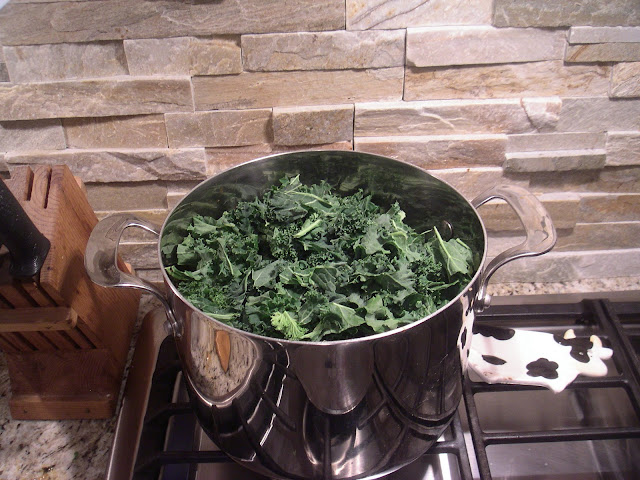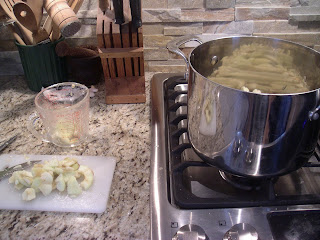The "Pantry in Action" series shows creative ways of using all the wonderful food we've preserved during the year. I will include recipes wherever appropriate with links back to the post(s) where a particular ingredient (or ingredients) was canned.
Okay, putting this post under "Pantry in Action" is a bit of a stretch for me and my pantry at the moment, but it should (and would if I had all my pantry staples made) be able to make use of many pantry staples, like canned black beans, dried tomatoes, frozen chopped spinach and canned beef stock. At the moment, all I have available in my pantry for this recipe are the dried tomatoes. So, for this post, we will have to substitute commercial products for the rest. Oh well, even if they are not strictly "locavore", they are products of Ontario or at the very least, products of Canada.
Anyway, the inspiration for this recipe springs from an attempt I made a couple of years ago to change my diet and try to lose some weight. If you've been following this blog, you've no doubt come to the conclusion that I like to surf the web and it's true: I do like exploring cyberspace, especially if I'm on a mission.
So, in my electronic travels, I happened across Tim Ferris and his 4 Hour Body. Basically he would have you eat high protein, low carb meals 6 days a week and then a deliberate "cheat" on day seven where you load up on all sorts of yummy hi-caloric treats to spike your metabolic rate. He suggests limiting the number of different high protein, low carb dishes during the 6 days and just rotating through the same 3 or 4, preparing an inventory of them in advance so you don't need to think about what to have for your next meal and will therefore be less likely to cheat until the designated "cheat" day.
I tried it for several months a few years ago, and it actually worked -- I lost about 15 pounds -- but I got tired of eating the same few dishes over and over again so I slipped off it. I am contemplating trying it again after the holidays are over and see if I can't lose some weight again. Another 15 pounds would be nice. Twenty would be even better! This time, though, I will add more dishes to the repertoire to keep interest up.
Another of Tim's rules is to always eat (a high protein) breakfast within 1 hour (and preferably within 30 minutes) of waking up in the morning. I started doing just that when I first went on the 4 Hour Body plan and I've been doing it ever since. Amazing to think that not so many years ago, my stomach would revolt at the thought of eating anything until I had had at least two big cups of coffee in the morning! Change is possible!
One of Tim's power breakfasts consists of cooked lentils, sautéed spinach and a poached egg. This recipe is a re-construction of that to allow me to make it in advance and freeze individual portions, so in the morning, I can simply pop one into the microwave to defrost and re-heat while I am in the shower. If you're fussy about your eggs, this may not be for you because scrambled eggs become very rubbery when defrosted. I've switched to using a carton of yolk-replaced eggs and the texture after defrosting is a bit better, but nowhere near that of freshly cooked. So, take note. I tolerate the chewiness for sake of convenience in the morning when I'm rushing to get out the door.
So, I start by draining and rinsing 2 cans of black beans.
Next, I peel and slice a couple of garlic cloves and a handful of sliced home-dried tomatoes.
Sauté until fragrant and then ...
... add the drained black beans. Continue to cook on medium-high heat until the beans are heated through and start to pop, about 5 minutes.
Add a can of beef stock and bring to boil.
Add some frozen chopped spinach. The spinach pictured above is from Sobey's and I think it's just a brilliant way of packing -- so much handier than those frozen bricks we usually see. If I decide to grow spinach next spring, I think I may try freezing some of it this way in ice-cube trays.
I cover the pan at this point to help the spinach thaw and melt into the beans and leave it sit for 5-10 minutes before uncovering it and giving it a good stir.
Most of the liquid should have been absorbed by the beans and the spinach should be completely thawed.
Divide equally among 6 two-cup freezer containers.
Either beat 6 large eggs until thick and lemon-coloured and pour into the bean pan or use a carton of yolk-replaced eggs.
Cook eggs until well-scrambled then divide evenly among the freezer containers. Let cool, then cover and freeze.

















































